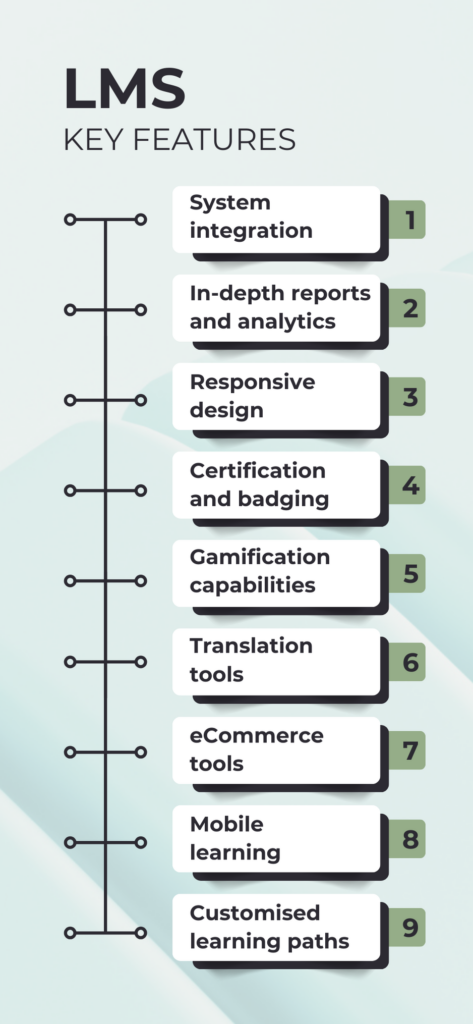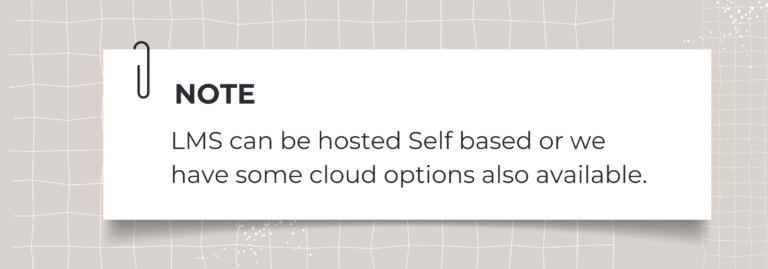Learning Management System (LMS)
The need to stay competitive through better education which many businesses are opting is delivering training through Learning Management System (LMS).
A learning management system or LMS is a platform which helps to create, organise, deliver, and report on training courses and programs. It can store and access information that can help users learn efficiently and effectively.
Advantages of Using an LMS
There are several key advantages of LMS to deliver your training.
- LMS Provide flexible training options to the users so that they can use the same as per their convenience.
- It is a cost-effective method of leaning as compared to classroom-based training which involves high cost.
- It Increase the reach globally. Wherever you are sitting you can access the LMS as per your time zone and language.
- It also manages the training content in a systematic way.
- It also Monitor the performance of learner while learning only.
- It also Improve the retention rate of the employees as they get more and regular opportunity to learn and improve their skills.
- It also Update learning content easily as the technology changes.
- LMS content can be designed keeping in mind the audience profile and experience.
- Most of the organization keep their emloyee induction content on LMS which reduces the onboarding time
Key LMS Features
The LMS features needs to be designed depending on the audience that you are planning to train. For example, learning management systems designed for internal employees have different features from those designed for training your customers.
In general, there are some key features to look out for:
 System integration – Is your LMS able to integrate with other internal platforms – Before you finalise the LMS platform for your organization you need to check whether it is compatible with the other platforms which you are using.
System integration – Is your LMS able to integrate with other internal platforms – Before you finalise the LMS platform for your organization you need to check whether it is compatible with the other platforms which you are using.- In-depth reports and analytics – This feature provide accurate reports which in turn gives better ROI (return on investment)? – The platform should be capable of providing the detailed reports so that organization can identify their growth.
- Responsive design – Is the LMS designed keep the users engaged? – LMS platform needs to be users friendly which means the audience should be able to use comfortably.
- Certification and badging – Can customised certification be created in LMS. LMS needs to be designed keeping in mind if customised content can be built up so that it can suit the exact requirement of the organization.
- Gamification capabilities – Is you LMS has gamification feature to do the knowledge checks? – Now a days, most of the organizations are using gamification technique to do the capabilities of their workforce. LMS needs to be designed keeping in mind this feature.
- Translation tools for global audiences – Is your LMS provides training in all languages for the global audience? – Most of the MNC has the requirement to adopt the LMS system which can be run on different languages so that it can give benefit to their global workforce.
- eCommerce tools – Are you able to sell your courses through integrated sales tools? – Now a days, many ecommerce tools are available in the market where LMS can be deployed and can be accessible to all for the use.
- Mobile learning – Can an audience learn using mobile device? – LMS needs to be designed in a way so that it can be accessible on Mobile.
- Customised learning paths – Can customised course be created for different audiences? – LMS Course needs to be designed keeping in mind audience profile, experience level and their expectations.

How Learning Management Systems Can Be Used?
- Creating courses
LMS can be used to create customised course as per the demand of the audience. elearning Courses can be as simple or as complex as required by the organisation and the learners. They can be in the form of instructional video or have many modules that engage learners with a mix of animations, games, virtual reality, and more.
- Organising courses
Putting together courses in an organised manner is the next step. You can make basic courses or more complex course as per the requirement.
- Deploying courses
Once your courses will be set up, you can choose the deployment model either it can be self-hosted or cloud-based learning.
- Managing users
The three users of an LMS are: administrators, instructors, and learners. Administrators set up the LMS, instructors create courses, and learners take courses. Managing users includes user registration to the LMS, access restriction to courses, course assignments, Participant-instructor interaction, exam, grading, certifications, and payment processing etc.
- Monitoring progress
The biggest advantage of using an LMS is that you can record and monitor the progress of the course.
- Data mining
Data mining is the large amount of data that the LMS can collect and analyse. This can be used for the purposes of training improvement
Tips for Choosing the Right LMS
Every organisation has their own requirements. To make the right decision on which LMS to implement, you need to set out your organisation’s learning goals.
- For choosing a right LMS you need to review your current requirements and your future plans
- Audience’s requirements play important role here. You should talk to your employees and ask them what type of training they require and give value to them.
- When anyone makes a huge investment then planning plays an important role.
Conclusion
LMS platform is an essential tool for eLearning. It offers a centralized, interactive, and data-driven environment for managing, delivering, and tracking educational content.